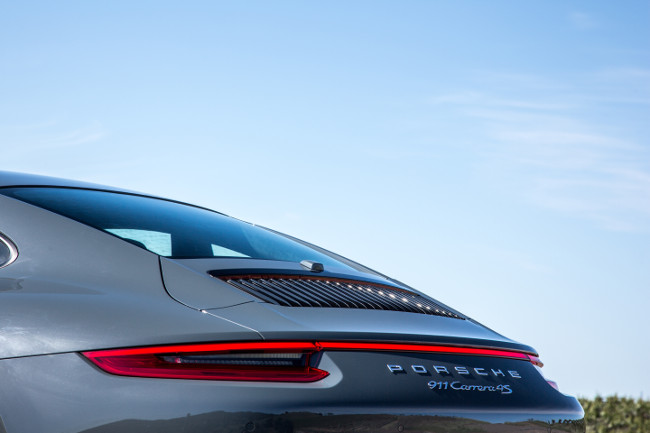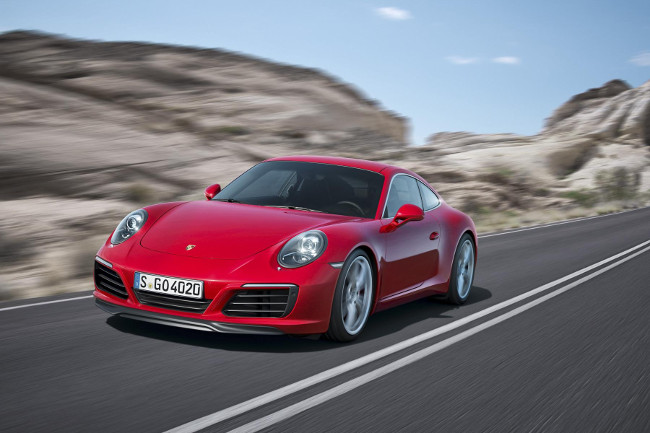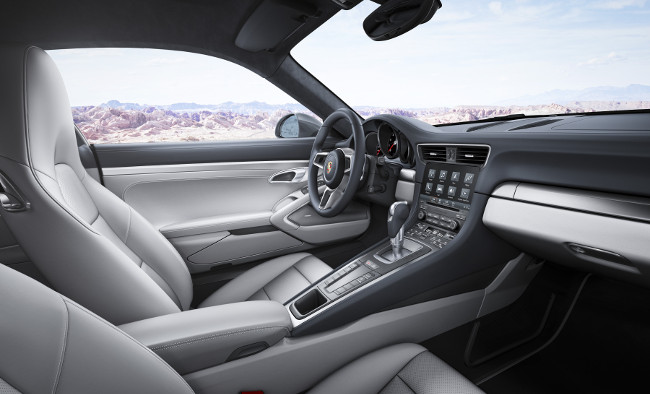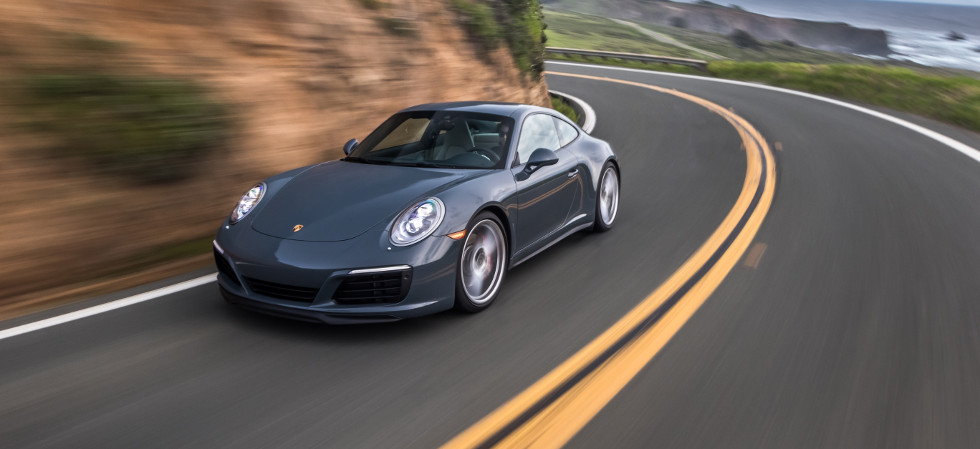Words by leading motoring journalist Mark Gallivan.
Last year I visited the Porsche Experience Centre at Silverstone under a cloudless March sky. The idea was simple – journalists were being treated to a full day of track and road driving. Now what I wanted to find out was how the new forced induction in a base Porsche 911 had changed its unique character.
However, before we were even allowed within five feet of the assembled cars – ranging from a base 911 Carrera to a 911 Turbo S – a drivers’ briefing was held. We were told that every new owner of a Porsche is offered a free half day at the Centre so he or she can find out about the handling characteristics their new car under a range of conditions. It’s suggested also that if a faster car is approaching from behind on the track at speed we should indicate left, move over and let it pass. This clearly is Porsche speak for “for goodness sake, please don’t crash our nearly-new, expensive sports cars”.

Then in the middle of the briefing we heard about the new 992.2 (or the 2016 facelifted Porsche 911 to the rest of us). It’s the usual corporate message. We told the car has been updated a bit outside and inside – a new front apron here, bigger front air intakes and rear outlets there, new headlights and taillights – that sort of stuff – it even has rear axle steering to enhance high speed driving which gives the new 911 an uncommonly small turning circle in town. There’s the addition of now standard Porsche Active Suspension Management (PASM) offering two suspension damping options – Normal and Sport – across the range, making urban driving more compliant over rougher surfaces. “Oh, and yes, we’ve now got turbos in the base 911. Now, as we were saying…” That, right there is what you’d call perfect understatement or a potentially monstrous clanger. A turbo in a non-turbo Porsche, really?
Then over one year later I ended up at the Porsche Experience Centre – this time in humid Atlanta, Georgia. And I started wondering, had the passing of 14 months capitulated on my support of the new turbocharged engines against the murmurs of displeasure from Porsche fans?
To fully appreciate the seismic nature of this announcement, you must firstly understand Porsche. As champions of glacial engineering changes, it’s a company utterly uninfluenced by trends and take it’s time when honing its cars – none more so than its important 911. Back in 1997, after 34 years of air-cooled engines the decision to change to water-cooling was the talk of wine-bars on the King’s Road. Had Zuffenhausen ruined the 911 by taking its very DNA – the shrill metallic wail – away? Time passed and we all got used to the new engines but now, nearly nineteen years later, 911 loyalists have another evolution to contend with – a bi-turbo engine in the base Carrera – and a smaller one at that – a 3.0 litre. To explain, the Porsche way is this: the Turbo is the Daddy and Carrera the entry level car. Even our parents know that. True, emissions and efficiency are to blame but now it seems anyone with a 911 can lay claim to owing a Porsche Turbo, can’t they?

Once outside, we were led to the Carrera S, got in, closed the door and took a deep, deep breath. This. Was. A big one. Phruuumnnnnn! The good news once out on the track is that the 991.2 Carrera S does resembles the sound of the old air-cooled engine and even provides traces a distant metallic whine between 2,700 and 5,000rpm like a G-Series 911 from the 1970s although with a deeper, percussive sound. Drop the window and sure you’ll hear turbo whistles but what sets the car apart is the spread of low down, linear torque up from 324lb ft to 369lb ft.
It’s faster too, with a higher to speed of 192mph and sub four seconds to sixty of 3.9secs with Sport Plus and PDK gearbox. Peak power is available lower down the rev range from 7,400rpm to 6,500rpm. Where the previous 991 from 2015 had to be worked harder with lower gears selected, this new engine better suits urban third gear acceleration with more linear surges of torque. It’s different, but somehow the characterful sound of the air-cooled engine has come back like a grey spectre from the past and to be found buried somewhere within the rev range. And let’s be honest, it was never there in the 997 or 991 generation in the first place, no matter what Porsche said.

The true 911 expert will have spotted the new headlights, rear lights, bumpers, engine cover and new interior touchscreen – although looking at the car and tilting one’s head sideways, most people probably won’t. Prices for the base Carrera with manual transmission starts from £77,891.00 (a recommendation here – always tick the PDK box). Factor in sensible servicing intervals – the first 30,000 miles or 2 years and around £600 and £750 two years after that – along with brake fluid changes every two years – and the 911 seems to be an extraordinarily reasonable supercar to run. Add the upright seating position with great visibility, solid build quality (although the buttons on the console are way too small) and the ubiquitous 911 makes a good case for itself in an increasingly busy supercar marketplace.
But mercifully, most of all the car’s key DNA remains fully intact with this facelift. If you’ve owned 911s previously the new smaller turbo engine will surprise you but buried deep in the rev range is now that old 911 air-cooled sound. We predict going hunting for it on a long drive home should be the hidden prize awaiting all new 911 owners.






















